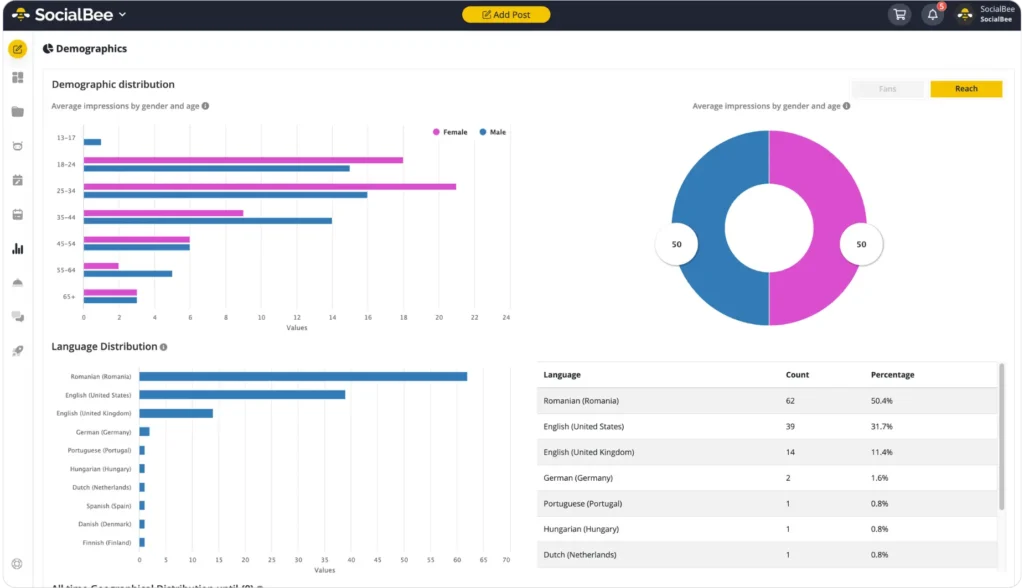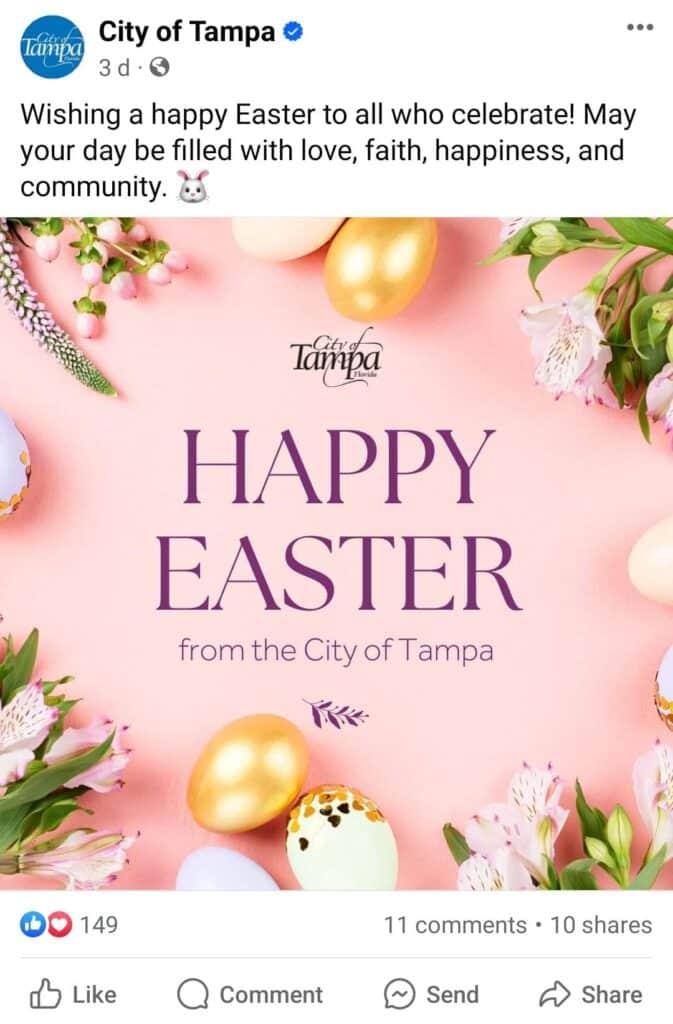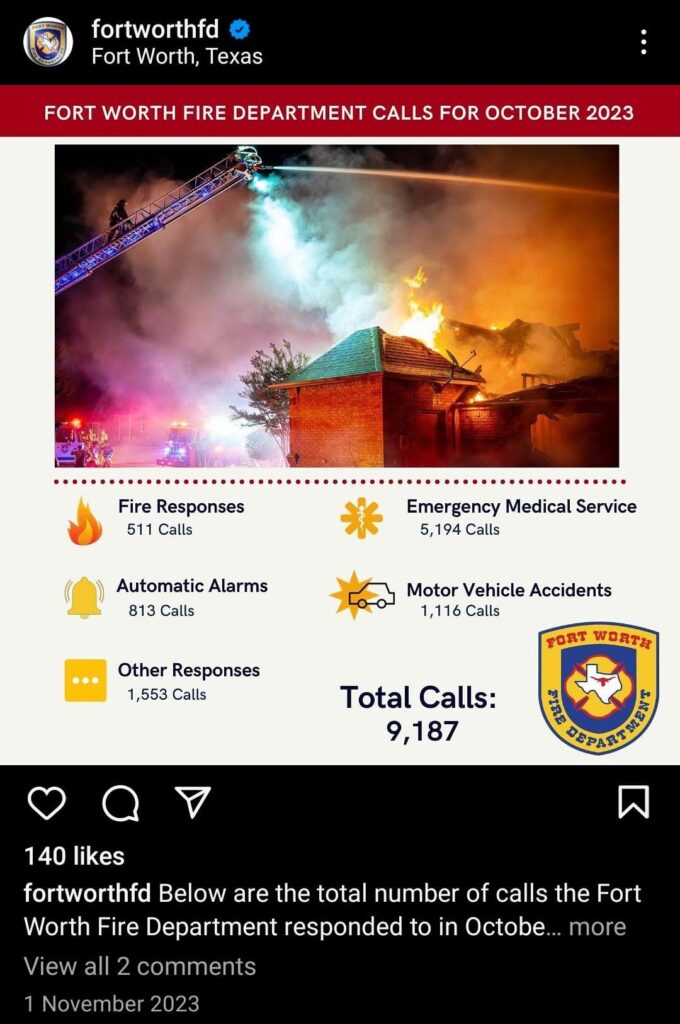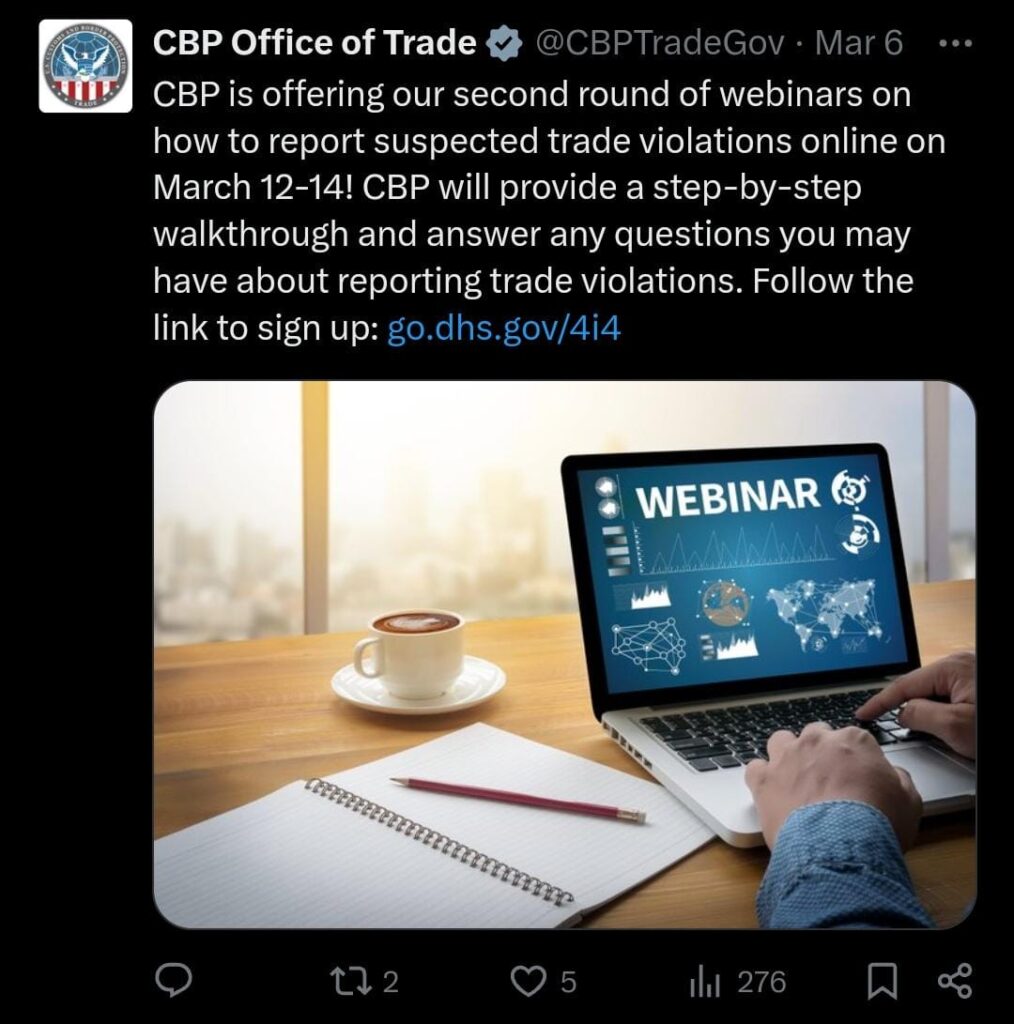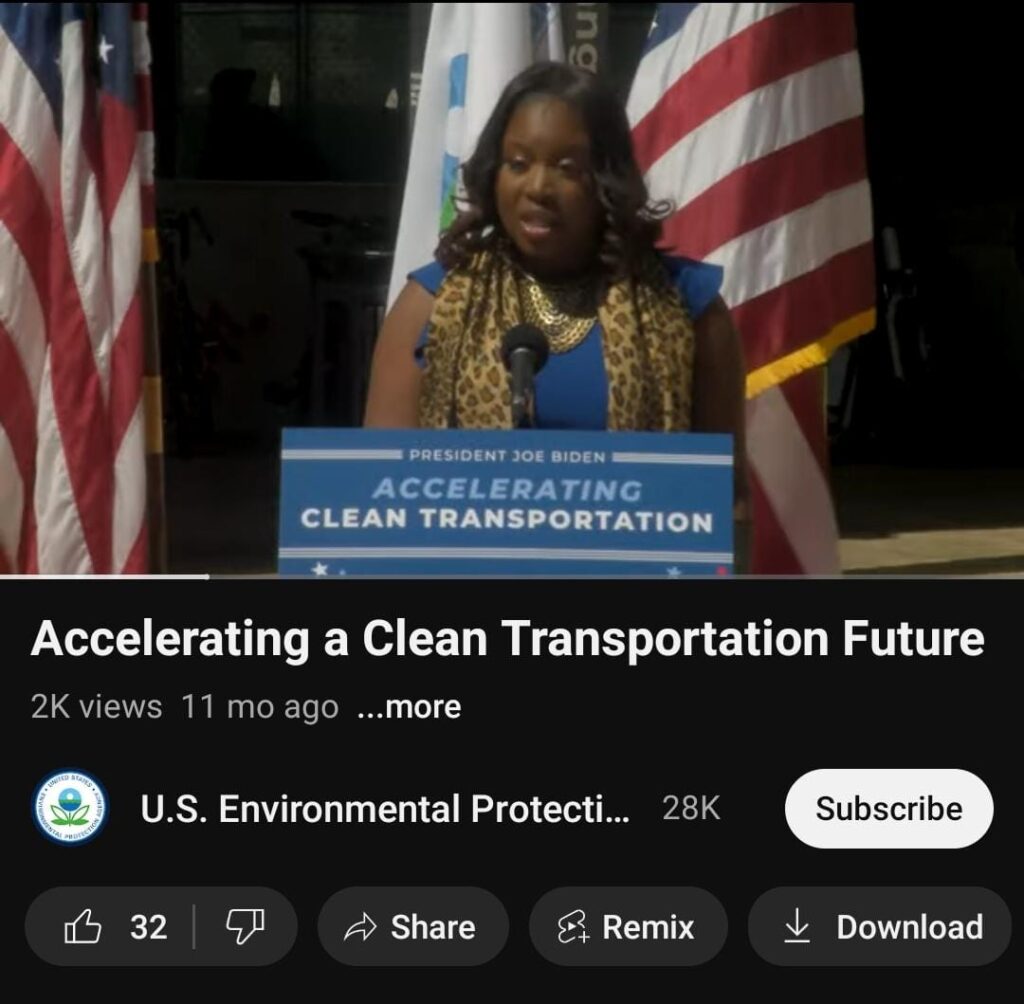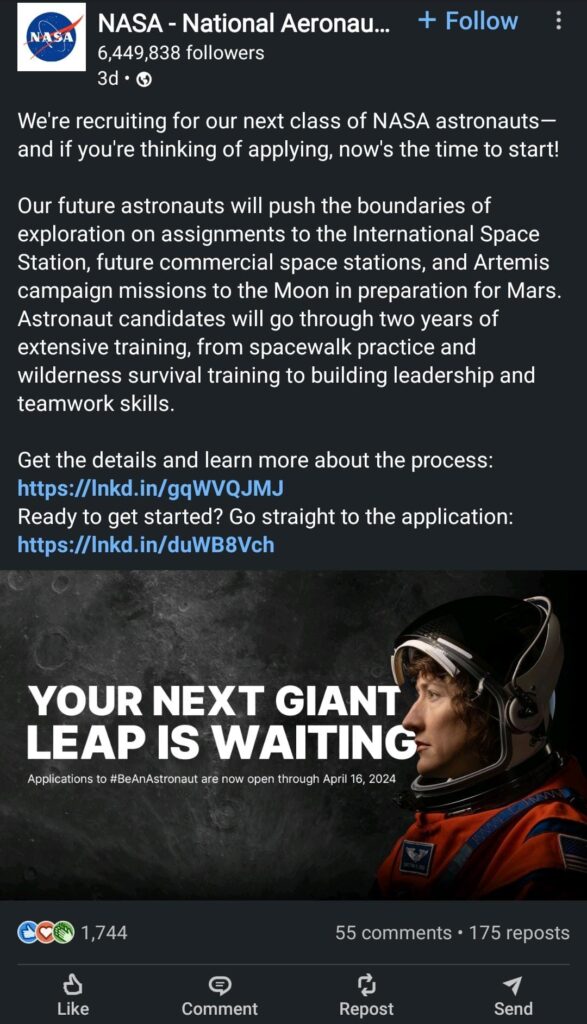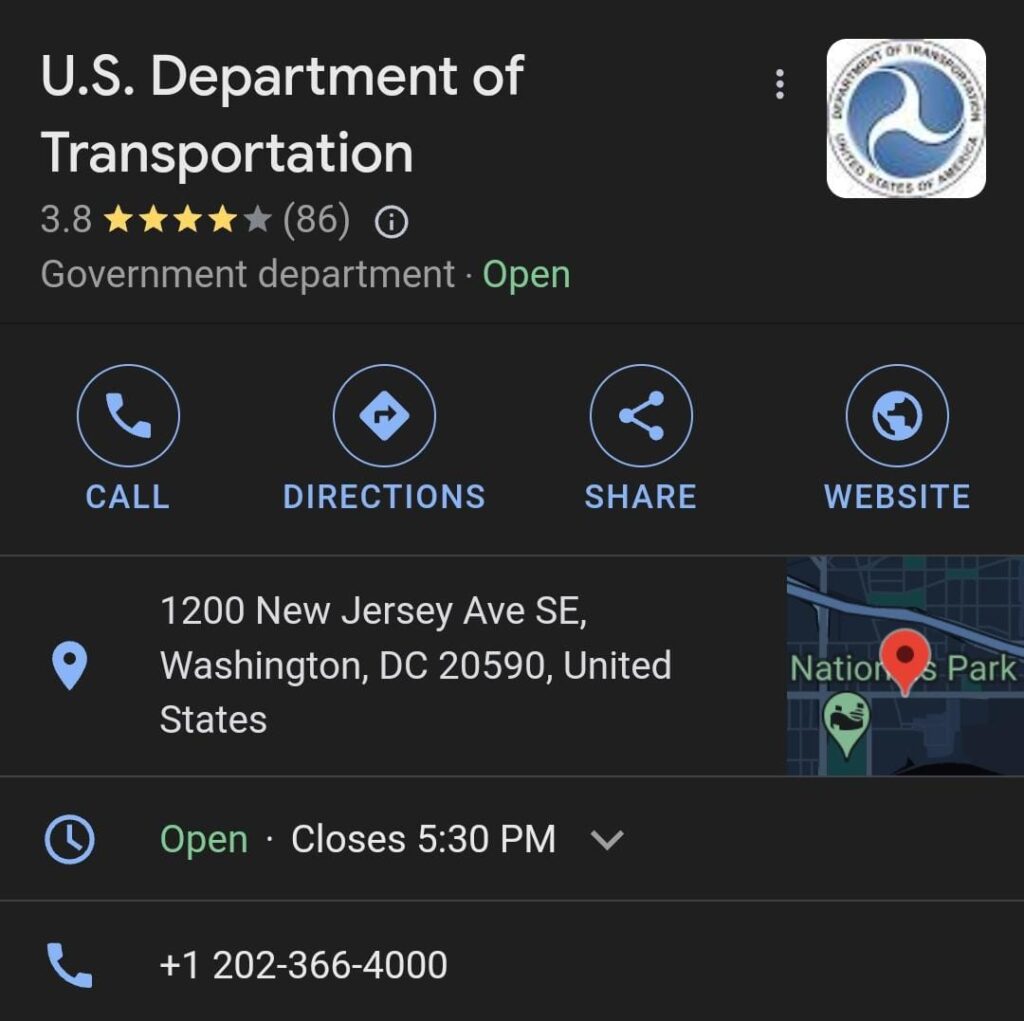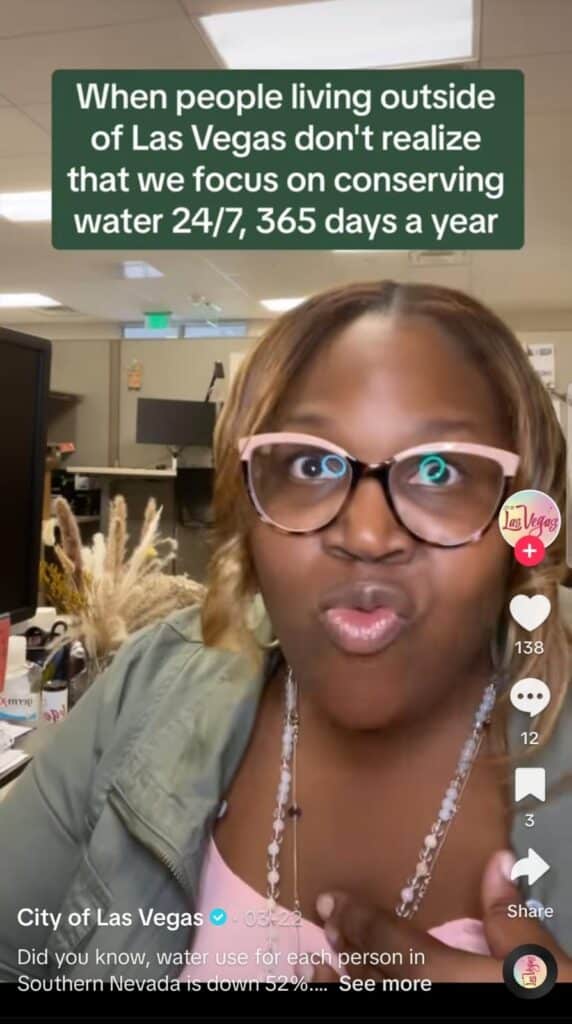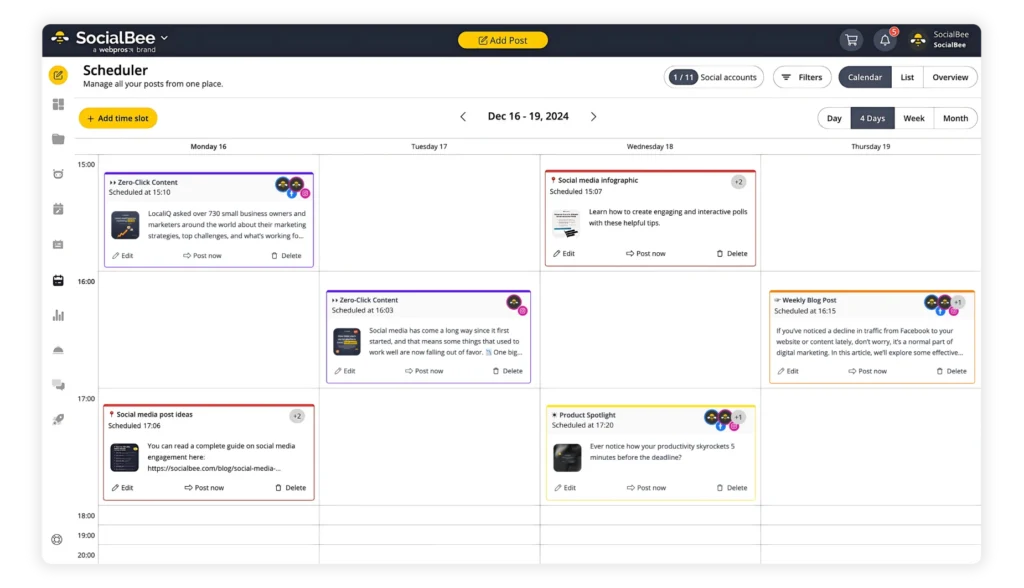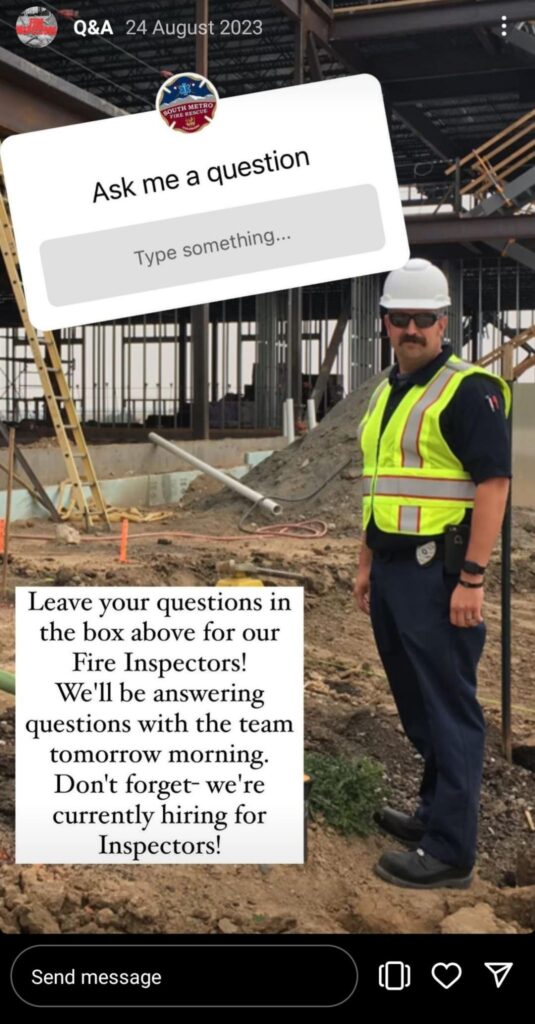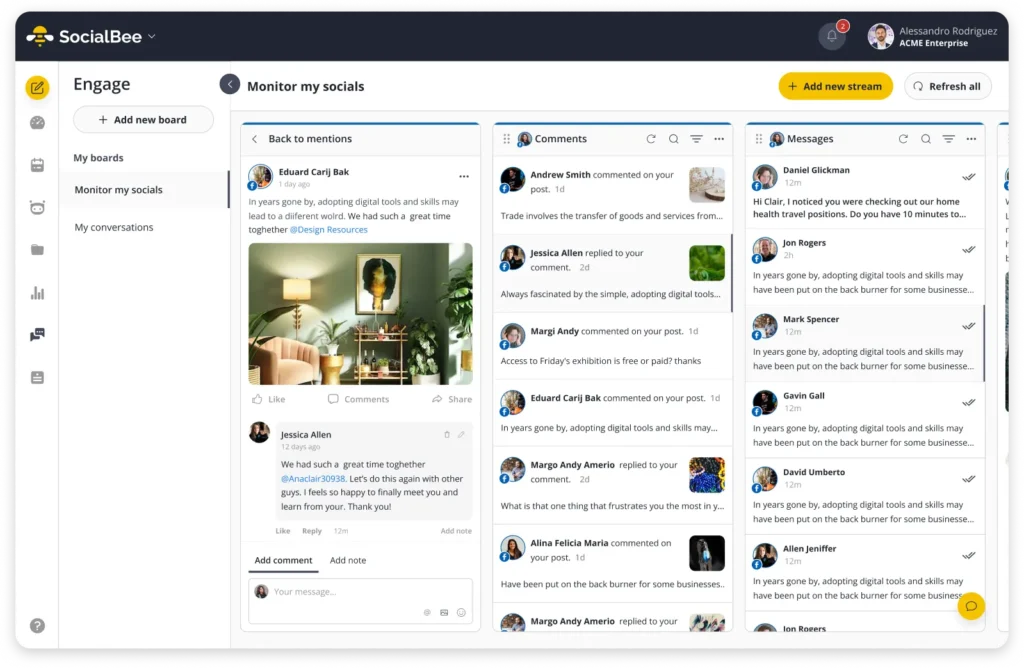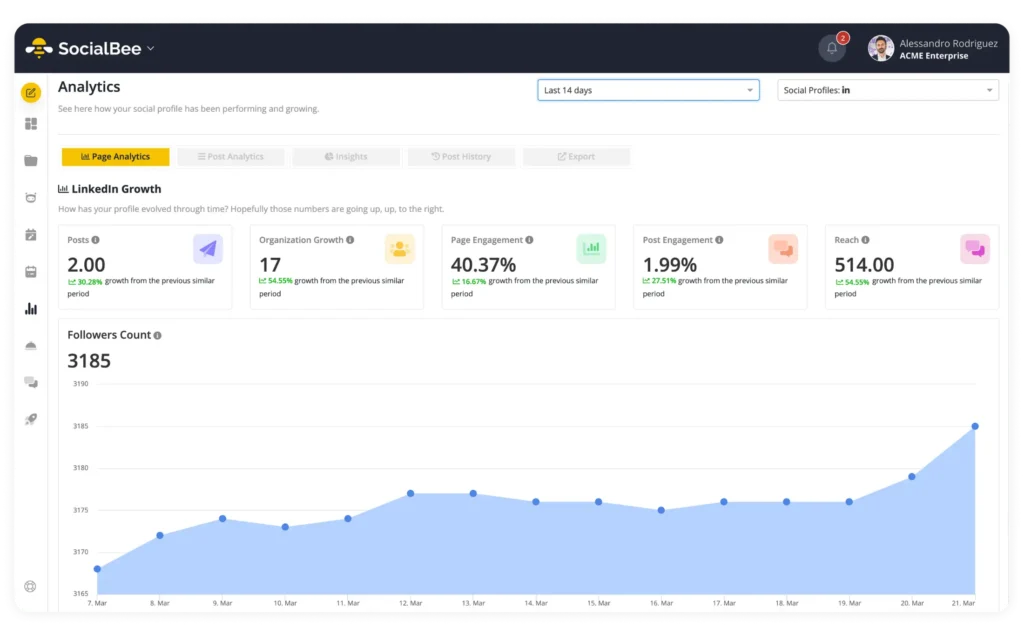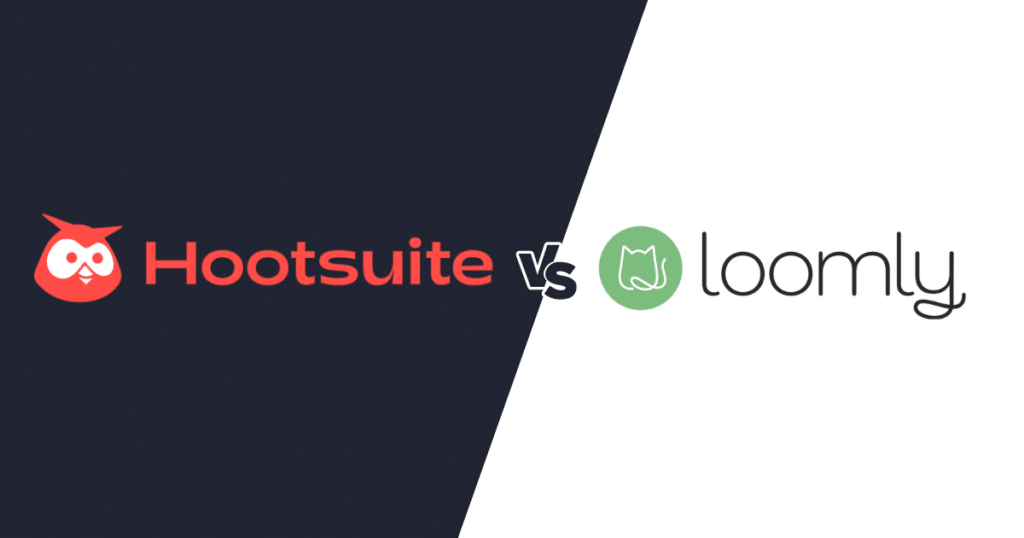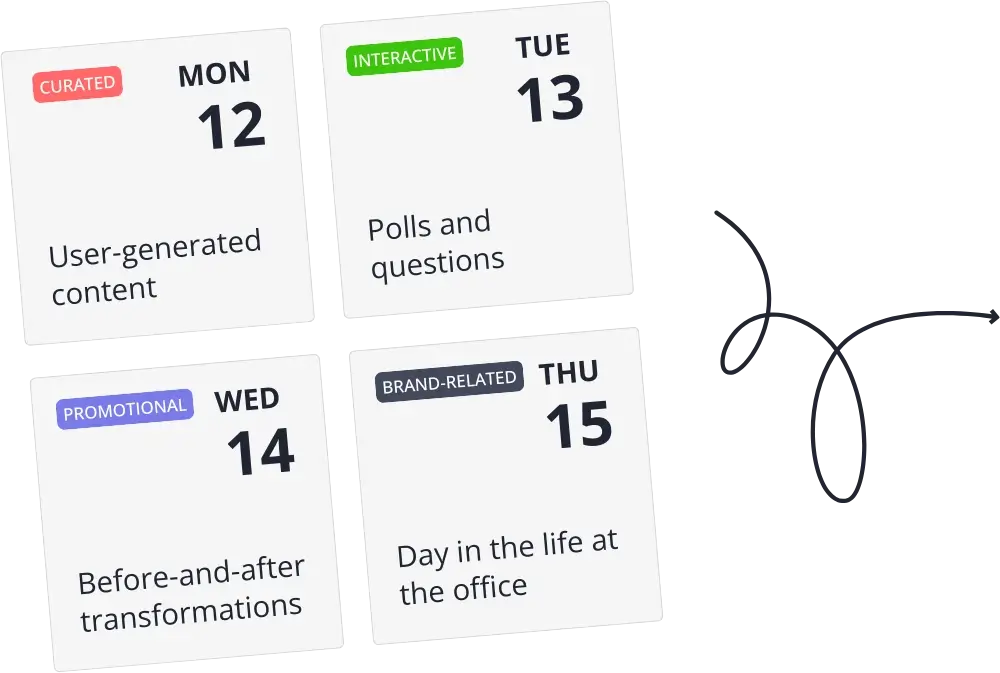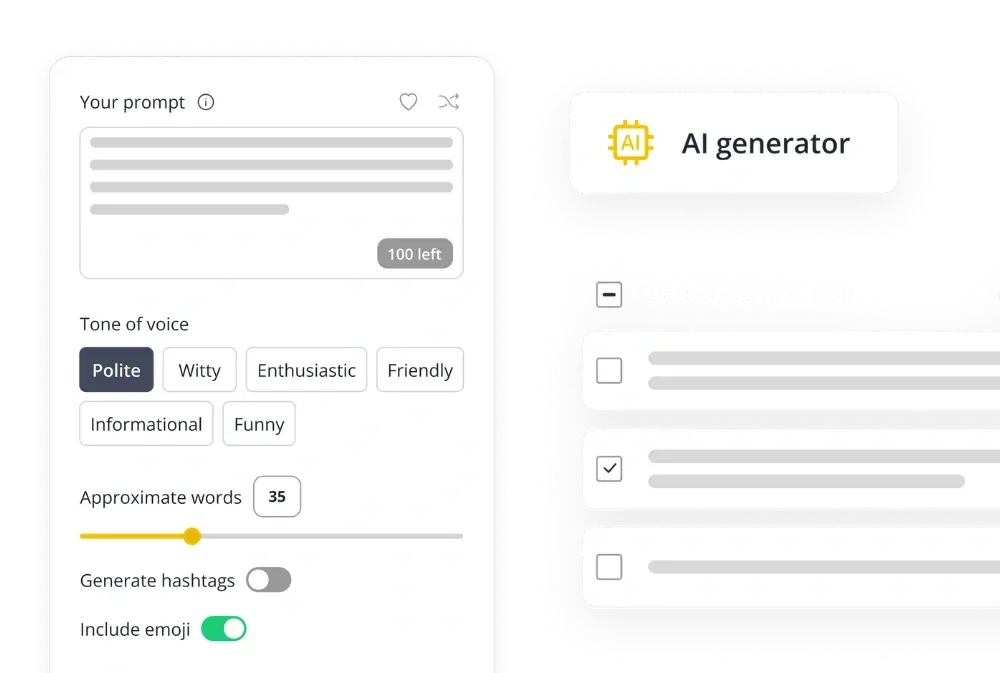
Content Writer at SocialBee
Are you navigating the intersection of government and social media the right way?
One primary challenge for this sector is balancing social media effectiveness with regulatory compliance. Crafting a strategy that resonates with diverse audiences while upholding institutional standards can be daunting.
Join us as we explore strategies for official entities looking to optimize their social media presence. From setting objectives to content creation and community engagement, we provide insights that can help government social media professionals build effective strategies. Shall we begin?
We’re SocialBee LABS SRL, part of WebPros. We use the information you provide to share relevant content and product updates, as outlined in our Privacy Policy. You can opt out anytime.
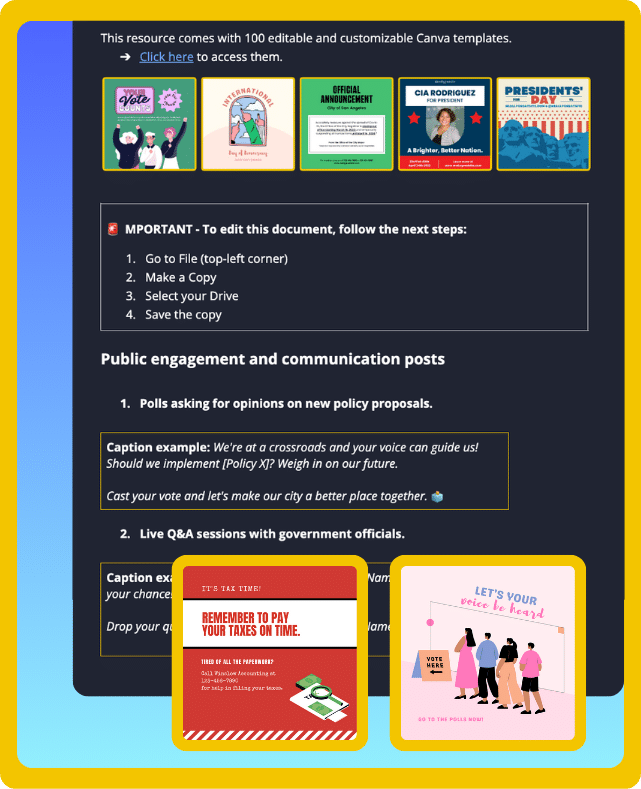
Short Summary
- Official social media accounts are vital for modernizing government communication strategies. They offer benefits like enhanced public engagement, increased transparency, and accessibility. They also help with crisis management and the promotion of services and initiatives.
- To build an impactful government social media marketing strategy, define clear objectives aligned with organizational goals. Understand your target audience through research and segmentation.
- Select social media sites by looking at who uses them, how they interact, and if they’re good for government messages. Plus, leverage platform-specific features to maximize content impact.
- Establish a content calendar to maintain consistency and plan posts in advance. Align them with relevant events and initiatives.
- Create social media posts that focus on delivering high-quality visuals, keeping the message brief yet impactful, offering valuable content, staying genuine, and actively engaging your audience.
- Develop an engagement and communication strategy that values transparency. Encourage two-way communication to empower advocates within the community.
- Have a plan for staying in line with government social media policies that includes training your team, establishing rules, and monitoring activities to keep everything on track.
- Keep records of your social media activity for transparency and to meet legal requirements. Use tools to help archive and organize your posts.
- To understand if your social media efforts are hitting the mark, define key performance indicators (KPIs). Use analytics to monitor engagement, reach, and the effectiveness of your campaigns. Regularly review these metrics and adjust your strategy based on what you find.
- Iterate and improve your efforts through experimentation. Make continuous adjustments based on analysis and feedback. Refine your content, messaging, targeting, and tactics.
The Value of Official Social Media Accounts to Government Agencies
Official social media accounts are pivotal in modernizing government communication strategies, serving agencies and constituents alike.
Here’s how government agencies benefit from having official social media accounts:
- Enhanced public engagement: Social media gives government agencies a lively and interactive space to connect with people. By engaging with constituents, they can spark meaningful conversations, collect audience feedback, and tackle concerns assertively.
- Increased transparency: Posting updates, news, and behind-the-scenes content allows agencies to display accountability and dedication to serving the community.
- Accessibility and inclusivity: Thanks to digital channels, people with disabilities or who lack traditional communication access can easily connect with their government to stay informed.
- Crisis management and response: The real-time nature of social media lets agencies handle emergencies promptly. With panic and confusion taking over, access to reliable information, safety tips, and resources can be life-saving.
- Promotion of services and initiatives: What better way to spread the word about helpful initiatives than through engaging content and targeted ads? Social media enables federal government bodies to raise awareness about humanitarian initiatives, health campaigns, or education programs.
How to Build a Government Social Media Strategy
To build an impactful social media presence that strengthens engagement, fosters transparency, and promotes public trust in government institutions, you must employ a tactical approach.
Here is how to build a government social media strategy:
- Understand your target audience
- Blueprint your objectives
- Select your social media platform wisely
- Create a visual content calendar
- Craft compelling social media posts
- Create an engagement and communication strategy
- Ensure compliance with government social media internal policy
- Keep a copy of your social media content
- Monitor and measure impact
- Iterate and improve your efforts
1. Understand Your Target Audience
Audience research helps you understand who your constituents are. Identify demographic data like age, gender, location, and occupation. To do this, collect and condense information from data analytics tools, surveys, focus groups, or interviews.
Most social media platforms offer analytics that you can use. However, if a centralized approach is more your thing, use a third-party app like SocialBee to get comprehensive and insightful analytics.
Then, segment your audience into distinct categories based on shared characteristics or interests. Customize your messaging and content to resonate with each segment’s unique preferences.
To analyze audience demographics, engagement patterns, and content preferences, try SocialBee’s centralized, real-time insights that provide all the social media data you need.
Enhance your government social media efforts through SocialBee’s insightful analytics!
Combine all available data to craft comprehensive audience personas, which can further guide your government social media strategy.
2. Blueprint Your Objectives
Defining clear objectives is a must, as it sets the direction of your strategy, clarifies priorities, and provides a roadmap for success.
Start by aligning your social media objectives with broader organizational goals and priorities. Identify key focus areas that align with your agency’s mission and audience needs, like promoting government services or fostering community engagement.
To define your objectives, assess your audience’s needs, preferences, and behaviors. Additionally, ensure your objectives are specific, measurable, attainable, relevant, and time-bound (SMART).
EXAMPLE: Instead of vague goals like “increase engagement,” define specific metrics such as “increase social media engagement rate by 20% within six months.”
Set realistic targets that challenge your team, but that are achievable within your resources. Consider factors like current social media performance, industry benchmarks, and timelines.
PRO TIP: Break down your objectives into sub-goals to clarify responsibilities, allocate resources effectively, and track progress over time.
Let’s say your government agency promotes renewable energy. Within the next year, you want to increase public support and participation in renewable energy initiatives by 30% through social media campaigns.
Here’s how you could break down this objective into sub-goals:
- Develop informative and engaging content about how renewable energy works
- Foster a community of renewable energy supporters
- Encourage and share UGC that showcases initiatives in renewable energy
- Collaborate with influencers who are passionate about environmental sustainability
- Use targeted social media ads to promote key initiatives and events
- Continuously monitor and analyze the performance of social media activities
- Assign budgets and tools based on the specific needs of each sub-goal
3. Select Your Social Media Platform Wisely
As a government agency or federal employee, you must understand that each social media platform attracts different types of users.
Look at who uses each platform, how they engage, and what content they like. This will help you see if a communication channel is a good match for your goals and the audience you’re trying to reach.
Next, explore the special features and tools each platform offers to boost your social media strategy. Choose the ones that fit your aims best and use them to increase involvement and spread your message wider.
Here are the best social media platforms for government social media:
- Facebook: Best for direct interaction with constituents through comments, messages, events, and Groups
- Instagram: Best for showcasing government initiatives, events, and behind-the-scenes content in a visual manner
- X (Twitter): Best for disseminating timely updates, news, and alerts instantly
- YouTube: Best for conveying information, engaging audiences, and showcasing work in a versatile format
- LinkedIn: Best for connecting with professionals, industry experts, and relevant stakeholders effectively
- Google Business Profile: Best for allowing constituents to locate government offices, facilities, and service centers conveniently
- Pinterest: Best for conveying complex information in an easily digestible, visual format
- Bluesky: Best for giving state agencies greater control over data privacy, security, and content moderation
- TikTok: Best for disseminating educational, informative, and awareness-raising content
A. Facebook
Benefits of Using Facebook for Government Agencies:
- Provides a vast audience reach for government messages
- Supports text, images, videos, live streams, polls, and more
- Facilitates direct interaction with constituents through comments, messages, events, and Facebook Groups
- Allows precise ad targeting based on demographics, interests, and behaviors
- Provides accessibility features and tools to ensure inclusivity
Best Practices for Posting on Facebook as a Government Agency:
- Use Facebook Live to stream live events, press conferences, public meetings, and Q&A sessions.
- Focus on making Facebook updates accessible by adding rich and contextual descriptions when you post a photo.
- Incorporate a Messenger social media widget or Chatbot to provide instant responses to common questions, improving public service efficiency.
- Gather public opinion and feedback through Facebook polls.
- Create events, manage RSVPs, and engage with attendees directly from Facebook.
- Build communities around specific topics or initiatives for targeted engagement with Facebook Groups.
Facebook Content Ideas for Government Agencies:
- Highlight government initiatives, programs, and services.
- Showcase success stories to demonstrate the positive outcomes of government actions.
- Host live Q&A sessions, broadcast town halls, and walk followers through administrative procedures to engage directly with constituents and address their questions.
- Provide timely updates on relevant topics, events, and emergencies.
- Celebrate milestones, holidays, and community events to build a sense of pride and unity among constituents.
Here’s how @cityoftampa used Facebook to wish followers a happy Easter this year:
Talk about a simple way to spark engagement and rekindle the community spirit among citizens!
B. Instagram
Pros of Using Instagram for Government Agencies:
- Highly visual platform, ideal for showcasing government initiatives, events, and behind-the-scenes content
- Interactive features like Stories, Carousels, and Reels that help you build a community
- A user base that is mostly under 35 that enables officials to connect with younger generations of constituents
- The ability to create Instagram Collaboration posts that empower you to join forces with other agencies or federal employees and work toward shared goals
- Ease of working with influencers, private companies, or educational institutions
Best Practices for Posting on Instagram as a Government Agency:
- Maintain consistency in your visual elements across posts, Stories, and Highlights.
- Interact with followers through comments, DMs, and interactive features like polls and Q&A sessions.
- Leverage Stories, Reels, and Live videos to diversify your content.
- Incorporate relevant hashtags related to government initiatives, events, and trending topics.
- Use Instagram Collaborations to join forces with other agencies, influencers, or private sector companies that operate in the same field.
Instagram Content Ideas for Government Agencies:
- Share success stories that demonstrate the tangible outcomes of government actions and initiatives.
- Create inspiring visual campaigns and challenges to promote civic engagement.
- Use Stories to post behind-the-scenes content from your daily activities.
- Post infographics and data visualizations that simplify complex information and communicate key messages.
C. X (Twitter)
Pros of Using X (Twitter) for Government Agencies:
- Allows governments to disseminate timely updates, news, and alerts instantly
- Provides governments with a vast audience reach to amplify messages, engage with constituents, and raise awareness about time-sensitive information
- Enables direct interaction with constituents through replies, mentions, and direct message
- Offers hashtag functionality to facilitate content discovery and allow governments to participate in trending conversations
- Valuable for sharing information, resources, and educational content about government programs, services, and initiatives
Check out this example from the Fort Worth Fire Department:
Through easy and to-the-point data visualization, they demonstrate their impact within the community they serve.
Best Practices for Posting on X (Twitter) as a Government Agency:
- Craft clear and concise tweets that convey key messages.
- Add alt text that is between 150-250 characters to your images, as this is essential for making tweets accessible.
- Incorporate visuals, links, and hashtags to enhance engagement and visibility.
- Respond promptly to mentions, replies, and direct messages from constituents.
- Leverage features such as polls or threads to diversify content.
- Stay informed about trending topics, hashtags, and conversations.
- Participate in conversations with other government agencies, stakeholders, and community partners.
X (Twitter) Content Ideas for Government Agencies:
- Make public service announcements, send out safety alerts, and post emergency notifications.
- Leverage insights, research findings, and expert opinions on relevant topics and issues.
- Share breaking news, information, and updates about current government initiatives, events, and services.
Take a look at how the CBP Office of Trade uses X to announce an online event:
By combining suggestive visuals, a concise description, and a link to their webpage, they get a straightforward invitation that makes it easy to remember and attend the event.
D. YouTube
Pros of Using YouTube for Government Agencies:
- Offers a versatile format for conveying information, engaging audiences, and showcasing work
- Has live-streaming features, allowing for real-time communication
- Includes accessibility features like closed captions, auto-generated captions, transcripts, keyboard shortcuts, etc.
- Provides governments with a vast audience reach to amplify messages
- Can appear in Google search results, increasing discoverability
- Offers monetization options through ads, memberships, and merchandise
Best Practices for Posting on YouTube as a Government Agency:
- Maintain a consistent narrative and tone for your YouTube videos, Stories, and Shorts.
- Focus on video accessibility by including accurate captions. Remember that these are not just a transcript of what is said in the video; they also contain descriptions of sounds without a visual equivalent.
- Include compelling visuals, text overlays, and branding elements.
- Use relevant keywords, titles, descriptions, and tags to optimize video metadata for search visibility and discoverability. Revisit your existing YouTube captions and do the same thing.
- For longer videos, add chapters in video descriptions, allowing viewers to easily navigate your content.
- Collaborate with other government agencies, federal officials, influencers, experts, and stakeholders to maximize impact.
- Create eye-catching thumbnails for videos to capture viewer attention and encourage clicks. To save time, you can easily create and add thumbnails directly from SocialBee, leveraging its top-notch design integrations.
YouTube Content Ideas for Government Agencies:
- Create informative videos to educate the public and provide insights, explanations, and tutorials on relevant topics.
- Cover official activities and engagements or provide government encouragement.
- Make public service announcements, safety messages, and emergency alerts to provide critical information during crises.
- Host interviews with government officials, subject matter experts, and community leaders.
- Create educational series and playlists about civic education, public health, financial literacy, and environmental conservation.
Speaking of environmental conservation, here’s how the US Environmental Protection Agency leverages video content to educate the public on their latest initiatives:
It can be as easy as that: no extensive editing, no expensive video production, no fancy equipment involved.
E. LinkedIn
Advantages of Using LinkedIn for Government Agencies:
- Allows government entities to connect with professionals, industry experts, and relevant stakeholders effectively
- Empowers government officials and agencies to establish themselves as thought leaders
- Serves as a potent recruitment tool for government agencies to attract top talent, advertise job openings, and showcase their organizational culture and values
- Enables federal agencies to forge partnerships, collaborations, and strategic alliances with other organizations
- Provides a platform for officials to distribute content such as articles, reports, and white papers to a professional audience
Best Practices for Posting on LinkedIn as a Government Agency:
- Ensure your government agency profile is complete, up-to-date, and optimized with relevant keywords, descriptions, hashtags, and visuals.
- Publish articles, insights, and commentary on pertinent topics.
- Participate in relevant LinkedIn Groups, discussions, and forums to connect with industry peers, share knowledge, and build relationships.
- Share timely updates, professional achievements, and employee stories to showcase the organizational culture, values, and accomplishments.
LinkedIn Content Ideas for Government Agencies:
- Provide analysis or commentary on policy developments, regulatory changes, and industry trends.
- Disseminate success stories, best practices, and case studies showcasing the impact and outcomes of government programs.
- Share employee spotlights, interviews, and testimonials.
- Post about government events, webinars, and conferences, complete with joining links and compelling copy.
- Offer career advice, job opportunities, and professional development resources.
When it comes to posting about career development opportunities, @NASA has it all figured out:
You can easily replicate their approach: include all the necessary details, suggestive visuals, and any relevant links, and you’re all set!
F. Google Business Profile
Google Business Profile Pros for Government Agencies:
- Enhances federal agencies’ visibility in local search results
- Enables users to collect and manage reviews and feedback from constituents
- Integrates with Google Maps, allowing constituents to locate government offices, facilities, and service centers conveniently
- Ensures the accuracy and consistency of government agencies’ information across Google search results, Maps, and other Google services
Best Practices for Posting on Google Business Profile as a Government Agency:
- Ensure official profiles are complete, accurate, and up-to-date with essential and appropriate contact information.
- Take full advantage of the platform’s integration with Google Maps to help more constituents discover your agency.
- Actively monitor and respond to reviews and feedback from constituents.
- Use high-quality photos and videos to showcase government facilities or services.
- Leverage insights and analytics to understand user behavior, preferences, and search trends in your area.
Google Business Profile Content Ideas for Government Agencies:
- Address common queries and concerns from constituents by providing FAQs and resource links.
- Share timely updates, announcements, and changes to government services, programs, and operations.
Here’s how the US Department of Transportation uses Google Business Profile to provide all the information constituents need to get in touch with them:
Keep your profile updated with any changes in schedule, location, or contact information. Be mindful of any national holidays and update your information accordingly.
G. Pinterest
Pinterest Pros for Government Agencies:
- Ideal for sharing infographics, photos, and other visual content that can help convey complex information in an easily digestible format
- A predominantly female user base that allows agencies to engage with this demographic segment
- Can appear in search engine results, boosting discoverability
- Directs users to government websites, blogs, and resources
- Longer content lifespan than on other social networks
Best Practices for Posting on Pinterest as a Government Agency:
- Maintain consistent visual branding across Pinterest boards.
- Optimize Pin descriptions, titles, and board names with relevant keywords.
- Use Rich Pins like article Pins to provide additional context and information for government-related content from your blog or other third-party websites.
- Engage with users by repinning, commenting, and following relevant accounts and boards.
- Promote your Pinterest boards and pins across other social media platforms.
Pinterest Content Ideas for Government Agencies:
- Come up with creative do-it-yourself (DIY) projects and tutorials relevant to government initiatives.
- Post motivational quotes aligned with government values and goals.
- Share healthy recipes and nutritional tips to promote public health initiatives and encourage healthy lifestyles.
- Pin destination recommendations and local attraction listings to promote tourism.
- Share eco-friendly practices and green living ideas to raise awareness about environmental conservation and sustainability initiatives.
Take a look at how the US Department of Energy does this:
The best part? You can collaborate with other agencies or businesses to bring your ideas to life, either through the Pins themselves or through group boards.
H. Bluesky
Bluesky Pros for Government Agencies:
- A decentralized approach that gives state agencies greater control over data privacy, security, and content moderation
- Allows for community-driven development and customization
- Enables your federal agency to view and verify the algorithms and processes governing content distribution and moderation
- Gives governmental institutions greater control over user data and content on Bluesky
Best Practices for Posting on Bluesky as a Government Agency:
- Engage in the development and testing phases of Bluesky to provide feedback, insights, and requirements.
- Collaborate with other government agencies, developers, and stakeholders to leverage collective expertise for the adoption of Bluesky.
- Establish clear community management rules and guidelines to remove hate speech, misinformation, and harassment.
Bluesky Content Ideas for Government Agencies:
- Share updates, public service announcements, emergency alerts, safety information, and point social media users to other key resources.
- Post educational content, resources, and tutorials.
- Organize community engagement initiatives, campaigns, and events.
- Leverage accessible media content such as videos, infographics, and interactive presentations.
I. TikTok
TikTok Pros for Government Agencies:
- Allows governments to engage with younger demographics representing the next generations of constituents
- Enables content virality through trending challenges, sounds, hashtags, and templates
- Encourages authentic and creative content creation
- Effective for disseminating educational, informative, and awareness-raising content
Best Practices for Posting on TikTok as a Government Agency:
- Jump on popular trends and challenges that fit your message to show your agency’s lighter side and make complex information more digestible.
- Incorporate hashtags and keywords that are relevant to your niche to help your audience find your content.
- Play around with TikTok’s filters, effects, and music to spice up your posts and make content pop.
- Share behind-the-scenes glimpses of your agency or spotlight your staff doing their thing. Break down complex topics into bite-sized, easily understandable pieces. Whether it’s a quick how-to or myth-busting session, make learning fun and straightforward.
- While it’s important to be creative, ensure your content always aligns with your agency’s mission and values.
TikTok Content Ideas for Government Agencies:
- Create series of short, informative videos debunking common myths, misconceptions, and rumors related to government policies, programs, and services.
- Focus on attention-grabbing and memorable PSAs addressing important societal issues, safety tips, and public health messages.
- Launch user-generated challenges encouraging TikTok users to share their solutions and ideas related to government themes.
- Use educational video series to cover government processes, environmental conservation, and civic engagement.
Government agencies like @cityoflasvegas have this down to a science:
The main advantage of posting on TikTok is that you don’t need to overthink things. Sometimes, something as simple as a trending sound is more than enough to shine a spotlight on your agency’s work.
4. Create a Visual Content Calendar
Creating a content calendar is essential for maintaining consistency and focus in your social media efforts. To begin, determine the frequency and timing of your posts according to the best posting time recommendations for each platform.
Next, diversify your content by including various post types, such as informative, educational, government behind-the-scenes, or user-generated content. This will provide value to your audience and keep your feed fresh and engaging.
Then, plan your content calendar in detail, batching your content in advance. Aim to do this on a monthly or quarterly basis. It’s the perfect opportunity to align your posts with upcoming events, holidays, and initiatives relevant to your agency.
For a streamlined approach, leverage a social media tool like SocialBee. Not only does it visually structure your content calendar, but it also provides optimal posting time suggestions and allows you to customize your content for each social media profile.
Create, plan, and schedule your social media posts with ease.
Start your 14-day free trial at SocialBee today!
Here is how SocialBee helps you perfect government social media scheduling:
- Extensive platform support: Create and batch posts across Facebook, Instagram, Threads, X (Twitter), LinkedIn, Pinterest, Bluesky, Google Business Profile, TikTok, and YouTube to reach your constituents.
- Design integrations: Leverage built-in integrations with Canva, Unsplash, and GIPHY to create and curate visuals that comply with government branding guidelines.
- AI social media strategy: SocialBee’s social media assistant can generate your government social media strategy from scratch. Get platform and optimal posting frequency suggestions, content pillar and posting schedule recommendations, and readily-made posts.
- AI-content creation: SocialBee’s post generator harnesses AI to produce unique captions and vibrant images (with the power of DALL-E 3), making your official social media updates stand out.
- Content categories: Categorize your posts to maintain a diverse yet balanced government communication strategy.
- RSS feeds: Automatically import content from any blog’s RSS Feed to keep your audience up-to-date with the latest news.
- Customize your posts: Tailor your content for every platform – adjust the length of your posts, incorporate hashtags for networks like Instagram, and optimize image sizes, ensuring your content is ideally suited for each specific channel.
- Hashtag suggestions: Let SocialBee generate relevant hashtags to boost post visibility and connect with specific communities.
- Content recycling: Automate the re-posting of evergreen content with ease and set expiration dates for time-sensitive information.
- Consistent posting: Create a structured posting plan across your official social profiles to maintain a cohesive and reliable online presence.
- Collaborative workspace: Streamline your social media collaboration efforts by allowing multiple team members to coordinate their social media activities.

5. Craft Compelling Social Media Posts
Crafting compelling social media posts is the secret sauce for capturing your audience’s attention and driving engagement.
Here’s how to create compelling social media posts that support your government social media strategy:
- Quality over quantity: Prioritize content that adds value and resonates with your audience, rather than spamming them.
- Use visuals effectively: Incorporate eye-catching visuals to grab attention and convey your message more effectively.
- Craft compelling copy: Write clear, concise, and compelling copy that captures your message. Use persuasive language or CTAs to encourage engagement.
- Provide value: Ensure your posts are either informative, educational, or entertaining for your audience.
- Be authentic and transparent: Be genuine in your approach. Steer clear of overly promotional language, providing genuine value instead.
- Engage with your audience: Interact with your followers by asking questions, requesting feedback, and responding to comments and DMs.
- Stay up-to-date: Keep your posts relevant by staying on top of the latest trends, events, and developments.
Here’s how @USCPSC combines eye-catching visuals, compelling copy, and educational content while providing genuine value to their followers:
What makes this post truly impactful is the rather shocking combination of visual elements, complete with a to-the-point CTA and safety-related advice.
Remember, posts that have an added layer of complexity can spark more engagement among your followers.
6. Create an Engagement and Communication Strategy
Prioritize a communication style that emphasizes transparency, authenticity, and empathy. You can easily do so by promptly addressing comments, messages, and inquiries from your audience to demonstrate that their voices matter.
Additionally, foster an open dialogue and interaction with your audience. Actively seek feedback, opinions, and ideas from your audience through polls, surveys, and Q&A sessions. Here’s an example from South Metro Fire Rescue Department:
Empowering thought leaders, advocates, and ambassadors within the community to speak out can significantly amplify your agency’s message and reach.
To effectively manage the community surrounding your agency on more than one channel, use SocialBee’s Engage Module. Monitor and reply to comments, messages, and inquiries from a unified dashboard, without the need to manually switch between platforms.
Get a social media management tool like SocialBee to engage with your audience from a single dashboard.
7. Ensure Compliance with Government Social Media Internal Policy
Familiarize yourself with the relevant policies and guidelines regarding social media technologies. They usually cover official government account data security, confidentiality, privacy, accessibility, and acceptable social media platforms.
Here are some examples of what social media internal policies can look like for government agencies:
- Keep a tight lid on sensitive information and make sure everyone’s privacy and personally identifiable information are protected.
- Ensure your social accounts (and your agency website) are welcoming and accessible to everyone.
- Choose reputable and reliable social media companies and platforms.
- Be clear about what’s an official statement and personal opinion.
- Have a solid game plan ready for social media emergency management.
Next, establish clear protocols and procedures for compliance. Define roles and responsibilities, outline the process for reviewing and approving content, and set guidelines for engaging with your audience while meeting policy requirements.
If necessary, provide training sessions, resources, and ongoing support to keep your team informed about policy changes and updates.
Lastly, keep an eye on your social media presence by detecting and addressing compliance issues promptly. Flag any content or interactions posing risks, and develop a process for reviewing and addressing these issues.
8. Keep a Copy of Your Social Media Content
If you’re keen on transparency, accountability, and compliance, create a process for archiving content. Budget time for saving copies of posts, comments, messages, and interactions from all social media platforms.
Using a social media management tool is specifically useful in this case since it allows you to keep a history of all your content and social media interactions.
These records will come in handy for auditing, reporting, or legal procedures. Store them in a centralized repository, but only let authorized federal employees access them.
9. Monitor and Measure Impact
Assessing the impact of your strategy across social media sites is a good way to identify what works and what doesn’t.
Here’s how to monitor and measure the impact of your government social media strategy:
- Define key performance indicators (KPIs): Choose metrics that match your goals. For example, if your goal is to increase public engagement, track engagement rates (likes, comments) and follower growth.
- Track audience engagement: Monitor how people interact with your content. Identify what type of content (e.g., educational posts, interactive polls) gets the most engagement and adjust accordingly.
- Assess reach and impressions: Find out how many people see your content and how often it appears on feeds. This helps understand your content’s visibility.
- Evaluate conversion rates: Track conversions like website visits, sign-ups, or downloads to measure how effective your efforts are at driving specific actions.
- Conduct sentiment analysis: Monitoring social media interactions can reveal what people think about your organization. Use this to spot changes in public opinion and respond to negative feedback early.
10. Iterate and Improve Your Efforts
Experimentation is crucial for refining your approach. Try out new content formats, posting schedules, and engagement strategies to find what resonates best with your audience on each social media account. Constantly refining your government social media strategy keeps you adaptable to changing dynamics, sparks engagement among your audience, and drives tangible outcomes for your agency.Frequently Asked Questions
Here’s how social media can be used to influence your community:
- Sharing valuable information: Provide updates, resources, and insights that matter to the community. This establishes credibility and expertise within your government agency.
- Encouraging dialogue: Engage in conversations with community members by responding promptly to comments and messages. This fosters a sense of connection and involvement.
- Working with influencers: Collaborate with local influencers to amplify your reach. Their input lends authenticity to your initiatives.
- Showcasing success stories: Highlight successful projects and initiatives to demonstrate the positive impact of government efforts on the community.
Here’s how social media effectively promotes local government:
- Increasing transparency: Share updates and insights about local government activities to build trust.
- Celebrating achievements: Showcase local events and projects to generate enthusiasm within the community.
- Encouraging engagement: Inspire community members to participate in decision-making processes and offer feedback on local issues.
- Providing timely information: Disseminate important updates about local emergencies to enhance public safety.
Here’s how social media supports policy advocacy in present time:
- Raises awareness: Use social media to inform users about social, political, and environmental problems.
- Mobilizes support: Organize campaigns to mobilize support for policy initiatives and petitions.
- Influences decision-makers: Engage policymakers to advocate for change using compelling narratives and data.
- Builds alliances: Collaborate with organizations to amplify advocacy efforts and influence policy outcomes.
Start Your Government Social Media Journey with SocialBee!
In summary, creating an effective social media plan for government agencies requires a strategic approach. For those seeking support, explore SocialBee, a social media management platform suitable for government marketing.
Take your first step towards maximizing your digital outreach efforts with SocialBee’s 14-day free trial. Embrace innovation, stay connected, and continue striving for excellence!


